Woodward Turf Farms
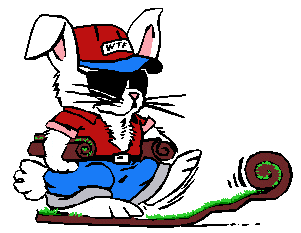
Turfgrass Varieties
Bermuda
Zoysia
Fine Fescue
Tall Fescue
Kentucky Bluegrass
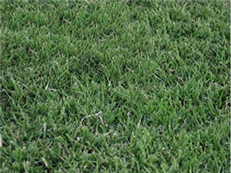
Warm-season grass - fine to medium leaf texture, dark green, dense and low growing via rhizomes and stolons some varieties tolerate very low maintenance, while others produce lawns of exceptional beauty when given extra care - root system is extensive and very deep.

Recommended Usage
Best adapted to hot, dry or tropical climates - recommended for residential and commercial landscapes, golf courses, sport fields, parks and recreation areas - ideal for homes with children and pets.
Temperature Tolerance
Excellent heat tolerance up to 110(F., performs best during periods of heat - has a winter dormancy period, turns tan to brown at temperatures below 55(F. Poor cold hardiness.
Drought Resistance
Superior - highly drought resistant, but also responds to irrigation in dry periods. Can go into summer dormancy when irrigation is withheld; upon return of moisture supply, will green up again. Some varieties have better tolerance to heat and drought.
Shade Adaptation
Poor - requires full sun for most of the day to grow properly - should not be used in a shady site.
Wear Resistance
Excellent - withstands wear better than most grasses - can tolerate heavy traffic and when injured recovers more rapidly than other grasses.
Water Needs
Moderate - apply at least 1 inch of water as a deep soaking every 4 to 7 days to encourage a deep, healthy root system during hot or dry periods. Avoid frequent, shallow watering that results in shallow roots, permitting weed germination and growth.
Mowing & Thatching
Optimum mowing height is 1-2 inches for a quality lawn. Slow growth results in less mowing. Mow regularly with a sharp rotary or reel mower, allowing clippings from frequent mowing to remain on the lawn. Never remove more than 1/3 of the shoot growth at one mowing. Minimal thatch build-up, seldom requires dethatching.
Soil & Fertilizer Needs
Prefers an acidic soil pH of 5 to 6.5 - is well adapted to infertile, well-drained soil - very low fertilizer requirement. Fertilize 1 or 2 times a year, spring and fall, with a complete fertilizer containing nitrogen, phosphate and potassium - apply nitrogen at 1-2 lbs per 1,000 sq. ft. per year.
Disease, Weed & Insect Control
Aggressive enough to compete with weeds, reducing the need for chemical controls. Minimal disease and insect problems that can be chemically controlled.
Warm-season grass - leaf texture from fine to medium coarse - color ranges from light to medium green - forms a dense, low maintenance lawn - spreads by stolons and rhizomes - shoot growth rate is slow. Easy to maintain.
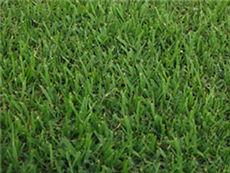

SZ Zoysia

Recommended Usage
Hot, humid and tropical climates - can withstand very heavy usage - recommended for residential and commercial lawn sites.
Temperature Tolerance
Tolerates heat exceptionally well up to 100(F, - subject to winter dormancy as it turns tan to brown at temperatures below 55(F, Zoysia japonica has fair cold hardiness, the best of the zoysias, but still ranks lower than cool-season turfgrasses.
Drought Resistance
Moderate to good - remains green and resists short periods of drought - takes heat as well or better than any other grass. Can go into summer dormancy when irrigation is withheld; upon return of moisture supply, will green up again. Some varieties have better tolerance to heat and drought.
Shade Adaptation
Good - slow growing in partial shade, but much better than some warm-season grasses.
Wear Resistance
Superior - exceptionally hardy, has the best wear resistance of any grass - tolerates heavy traffic - but slow to recover from severe thinning.
Water Needs
Low to medium - apply at least 1 inch of water as a deep soaking every, 4 to 7 days to encourage a deep, healthy root system during dry or hot periods. Avoid frequent, shallow watering that results in shallow roots, permitting weed germination and growth.
Mowing & Thatching
Optimum mowing height 1/4 to 1 1/2 inches for a high quality lawn, slow growth rate reduces mowing frequency. Mow regularly with a sharp rotary or reel mower, allowing clippings from frequent mowing to remain on the lawn. Never remove more than 1/3 of the shoot growth at one mowing. Periodic vertical cutting may be needed to control thatch accumulation if high nitrogen level is applied.
Soil & Fertilizer Needs
Tolerates high salinity and infertile soil relatively well. Fertilize twice a year, spring and fall, with a complete fertilizer containing nitrogen, phosphate and potassium. May also apply 1 or 2 summer fertilizer applications in climates with a long growing season. Apply N at 2 to 5 lbs per 1,000 sq. ft. per year. Water thoroughly after fertilization.
Disease, Weed & Insect Control
Some varieties have good resistance to diseases such as rust and leafspot, and to billbugs. The dense turf produced by zoysiagrass prevents most weeds from appearing.
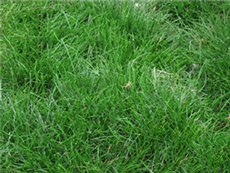
Cool-season grass - deep green color - finest grass blade of any lawn grass - upright growth habit creates a pleasing uniformity - has rapid germination and seedling establishment.
Eco Sod

Recommended Usage
Well adapted to cool summers and high altitudes - can do well even in cold and arid climates - often used in mixtures with other grasses because of an ability to blend - frequent component of bluegrass mixtures because it grows well in shade or drought-dry soil - used with a warm-season grass in the South, it provides green winter color.
Temperature Tolerance
Good - tolerates hot and cold weather well - has good winter hardiness - can be used in areas that are subject to widest temperature fluctuations.
Drought Resistance
Very good drought tolerance for a cool-season grass can go dormant in summer if irrigation is withheld, upon return of moisture supply it will green up again.
Shade Adaptation
Moderate - most shade tolerant of all grasses but needs some sun - best cool season grass for dry, shady lawns.
Wear Resistance
Moderate - grass blades are non-succulent and hardy making an ideal play surface - does not recover well from severe injury.
Water Needs
Low to moderate - water thoroughly (at least 1 inch) once or twice a week during most summer conditions - can enter summer dormancy if no water available.
Mowing & Thatching
Mow regularly with a reel or rotary mower - slow growth habit results in a uniform response to mowing - does best with a mowing height of 1 - 2 1/2 inches - will tolerate close mowing in cool climates. Clippings from frequent mowings can be left on the lawn, as Fine fescue does not develop thatch. Fine fescue can be left unmowed for a "meadow look."
Soil & Fertilizer Needs
Tolerates acid soil well, growing within a soil acidity range of pH 5.0 to 6.5 - has the lowest fertilizer requirements of any cool-season grass - apply a high nitrogen fertilizer with 1 lb. of actual nitrogen per 1,000 sq. ft. per year split between spring and fall application.
Disease, Weed & Insect Control
Most varieties have good resistance to many turfgrass diseases. Mixed with other grasses, fine fescue adds disease resistance to the turf. It has occasional susceptibility to summer diseases in hot climates, especially in moist, fertile soil.
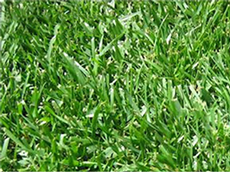
Cool-season grass - medium to dark green color, moderate density - more extensive root system than any other cool-season turfgrass. Texture ranges from coarse to medium for newer turf-types. A bunch-type grass.
Smart Sod

Tall Fescue
Recommended Usage
Very good transition zone grass - adapted to moderately cold winters and warm summers - good tough play lawn - recommended for a wide variety of uses, including residential and commercial landscapes, roadsides, parks, recreation areas, and sports fields.
Temperature Tolerance
Good heat tolerance for a cool-season grass - grows in a wide range of temperatures in the transitional climatic zone between cool and warm climates - less cold hardy than most cool-season grasses.
Drought Resistance
Good - one of the better cool-season turfgrasses, fairly deep root system helps avoid drought. Can go into summer dormancy, with brown leaves, when irrigation is withheld; upon return of moisture supply, will green up again. Some varieties have better tolerance to heat and drought.
Shade Adaptation
Good in transition zone - prefers full sun - moderately tolerant to partial shade. Of the cool-season grasses, only fine leafed rescues rank higher in shade adaptation.
Wear Resistance
Good - suitable for moderate recreation and foot traffic areas exhibiting good initial wear recovery, especially in spring and fall when growth is rapid.
Water Needs
Moderate - apply 0.5 to 1 inch of water as a deep soaking every 3 to 7 days to encourage a deep, healthy root system during dry or hot periods. Avoid frequent, shallow watering that results in shallow roots, permitting weed germination and growth.
Mowing & Thatching
Optimum mowing height of 2 to 3 inches for a high quality lawn. Mow regularly with a sharp rotary or reel mower, allowing clippings from frequent mowing to remain on the lawn. Never remove more than 1/3 of the shoot growth at one mowing. Tall fescue forms very little thatch.
Soil & Fertilizer Needs
Adapts to a wide range of soil conditions - has rather deep extensive root system for a cool-season grass that makes excellent use of soil moisture and mineral nutrients - good tolerance to saline soil conditions. Fertilize twice a year, spring and fall, with a complete fertilizer containing nitrogen, phosphate and potassium - apply N at 2 to 4 lbs. per sq. ft. per year. Will respond well to high nitrogen applications to achieve a higher quality turf. Water thoroughly after fertilization.
Disease, Weed & Insect Control
Varieties are available that are resistant to net blotch, brown patch and crown rust. For weeds, chemical controls are most effective during fall and spring.
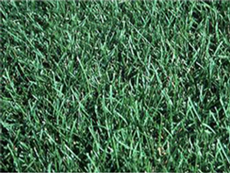
Cool-season grass - dark green color and dense, beautiful appearance, medium leaf texture with excellent leaf uniformity. Forms a strong sod via rhizomes.
Kentucky Bluegrass

Blend
Recommended Usage
Widely adapted basic lawn grass of the cool, humid, semi-arid and temperate regions - recommended for residential and commercial lawns. Also, widely used on sports fields and play areas, parks, cemeteries, commercial lawns and roadsides.
Temperature Tolerance
Thrives in cool weather and will tolerate very cold winters - undergoes stress during extremely hot weather, but will maintain good color and appearance if properly watered and cared for.
Drought Resistance
Medium - can go into summer dormancy when irrigation is withheld; upon return of moisture supply, will green up again. Some varieties have better tolerance to heat and drought.
Shade Adaptation
Fair to poor - thrives in sunny areas - a few varieties are moderately adapted to partial shade.
Wear Resistance
Medium - recovers quickly from occasional abuse - will withstand moderate foot traffic usage - rhizomes enhance quick recovery, especially in spring and fall.
Water Needs
Moderate - apply 0.5 to 1 inch of water as a deep soaking every 5 to 7 days to encourage a deep healthy root system during dry or hot periods. Avoid frequent, shallow watering that results in shallow roots, permitting weed germination and growth.
Mowing & Thatching
Optimum mowing height 1 1/2 - 2 inches for a high quality lawn. Mow regularly with a sharp rotary or reel mower, allowing clippings from frequent mowing to remain on the lawn. Never remove more than 1/3 of the shoot growth at one mowing. Kentucky bluegrass may develop some thatch at higher nitrogen levels. Prime time to dethatch is in early fall.
Soil & Fertilizer Needs
Performs best in fertile, non-acid reacting soil with good drainage. Fertilize twice a year, spring and fall, with a complete fertilizer containing nitrogen, phosphate and potassium. Apply 2.5 to 4 lbs. actual nitrogen per 1,000 sq. ft. per year for higher requiring nitrogen varieties also apply fertilizer at 0.5 to I lb. nitrogen per 1,000 sq. ft. every 4-6 weeks. During summer, fertilizer rates should be reduced by 50%. Water thoroughly after fertilization.
Disease, Weed & Insect Control
New varieties have improved resistance to diseases such as leafspot, stripe smut, powdery mildew, dollar spot, Typhula blight, summer patch and rusts. If broadleaf weeds need to be controlled with herbicide, the turf should be well established and in vigorous condition. Practically all insects that damage lawns can be controlled biologically or with insecticides.
*Information on this page courtesy of Turfgrass Producers International
Contact Us
Visit Us
Mobile Site
Just enter your name and phone number to receive a call from the Turf Experts.
Woodward Turf Farms | 14206 Lewis Lane, Remington, VA 22734 | (540) 727-0020
All rights reserved Woodward Turf Farms Inc. 2015



